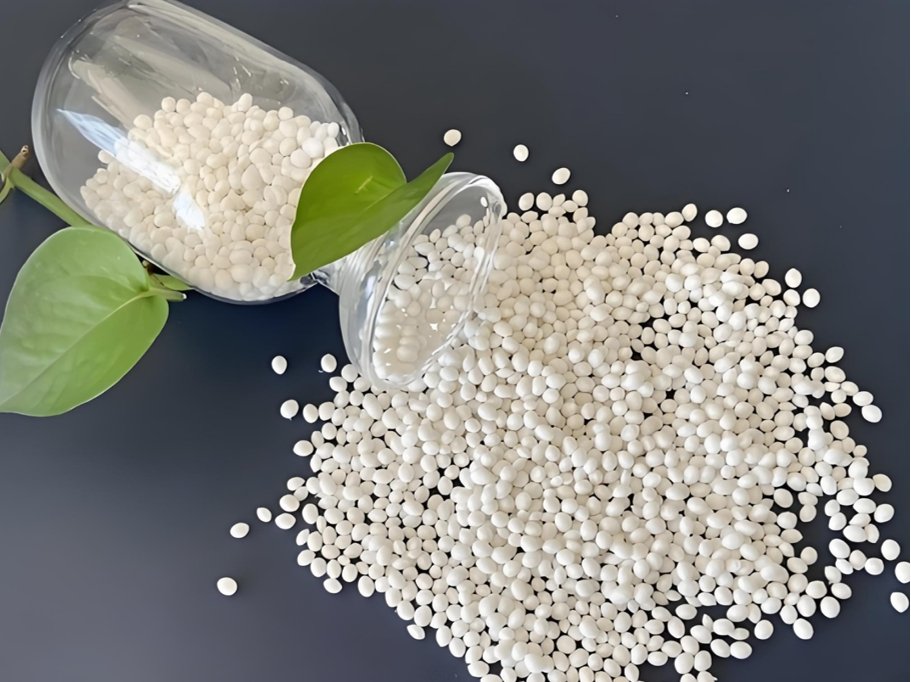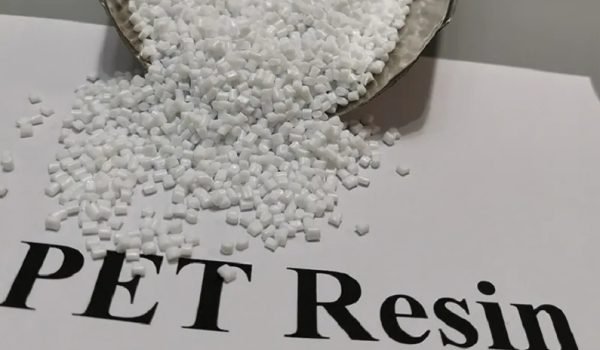PET (Polyethylene terephthalate) is one of the most versatile plastics used in manufacturing. It shines with its recyclability, flexibility, and compatibility with different formulations. Its amazing impact resistance and ability to produce strong, lightweight products make it the lifeblood of the packaging and textile industries. Many ask, “Can PET Be Injection Molded?” The answer is yes—it works!
PET is heated between 250-280°C. This melts the PET pellets, and the molten material flows into the mould cavities, producing good quality parts with complex shapes. This article will walk you through the entire process of PET injection moulding. You will learn from the preparation steps to production best practices. The guide will cover key elements like drying temperatures, mould optimisation and practical solutions to common problems.

What is PET (Polyethylene Terephthalate)
PET stands for Polyethylene Terephthalate, a plastic made by combining ethylene glycol and terephthalic acid. It is a strong, lightweight material that appears milky white or pale yellow with a smooth and shiny surface. Its chemical formula is (C10H8O4)n.
When PET is used to make fibres or fabrics, it is called polyester, but it is called PET or PET resin when used for bottles, containers, and packaging. PET is one of the most important thermoplastic polyesters. It has a repeating unit with a molar mass of 192 g/mol and is classified with PBT (polybutylene terephthalate) under saturated polyesters.
Key properties
PET’s molecular structure gives it excellent physical and mechanical properties. The polymer has a relative density of 1.38 and is stable across different temperatures. It retains its excellent electrical insulation properties even at high temperatures and frequencies.
PET has great barrier properties against gases. Its oxygen transmission coefficients are 50-90 cm3-mm/(m2-d-MPa) and CO2 transmission coefficients are 180 cm3-mm/(m2-d-MPa). The material’s water absorption rate is 0.6%, making it perfect for moisture sensitive applications.
The glass transition temperature is 65-80°C, and the melting temperature range is 240-270°C. With proper processing, PET can have a crystallinity of 40-50%.
Common uses of PET in industries
PET’s versatility makes it useful in many industries. Global PET production was 56 million tons in 2016. Fiber production accounted for over 60% of the total demand, while bottle manufacturing took about 30%.
You will find PET in:
- Electrical components like motor housings, electrical couplings, relays and switches
- Packaging for beverages, food products and pharmaceuticals
- Textile manufacturing for clothing, upholstery and industrial fabrics
- Automotive parts like headlight reflectors and structural components

Can PET be Injection Moulded?
Yes, PET (polyethylene terephthalate) can be injection moulded, making it a widely used material in various industries such as packaging, automotive, and consumer goods. Injection moulding is a manufacturing process where thermoplastic materials are melted and injected into a mould under high pressure. The molten plastic cools, solidifies, and forms a specific shape that matches the mould cavity. This process allows efficient mass production of complex and precise plastic components.
Why PET is suitable for Injection Moulding
PET has several properties that make it ideal for injection moulding:
- High Strength & Durability – PET has excellent mechanical properties making it suitable for rigid and impact resistant products.
- Good Dimensional Stability – PET retains its shape well after moulding, ensuring precision in part design.
- Chemical & Heat Resistance – PET can withstand moderate temperatures and chemical exposure making it perfect for food packaging and industrial applications.
- Recyclability – PET is highly recyclable, making it an eco-friendly option for various industries.
- Transparency & Aesthetic Appeal—PET can be moulded into clear or coloured products with a smooth finish, which is essential for bottles and cosmetic containers.
Key factors affecting PET Injection Moulding
Several factors influence the efficiency and quality of PET injection moulding.
One is the temperature control. PET melts between 250-280°C (482-536°F) while the mold temperature should be 80-120°C (176-248°F). Proper temperature control prevents crystallization and provides clarity and strength to the ultimate product.
The other vital parameters are the moisture content and drying requirement. PET is a very fast moisture absorber, if not duly dried before moulding. It can undergo hydrolysis, weakening the plastic. PET needs to be dried before injection moulding with recommended drying temperatures of 120–165°C (248–329°F) for 4–6 hours in a dehumidifying dryer.
Injection velocity and pressure also play significant roles in PET moulding. High injection pressure (1000–2000 bar) ensures the PET material is effectively filled into the mould. Fast injection speed prevents premature crystallization, which can affect the quality of the final product.
The crystallinity and rate of PET cooling affect the moulded component’s physical properties. Slow cooling increases crystallinity, making PET more brittle and opaque, while fast cooling ensures an amorphous and clear final product, ideal for bottles and containers.
PET Injection Moulding Process
The injection molding process for PET (Polyethylene Terephthalate) involves several important steps to ensure strong, high-quality products. Since PET absorbs moisture and is sensitive to heat, it requires careful handling to avoid defects like brittleness, discoloration, and deformation.
Step 1: Drying PET Before Molding
Before PET can be used in molding, it must be dried properly. PET absorbs water from the air, and if it contains too much moisture, it can become weak and brittle during molding.
PET pellets are dried at 100–120°C for 3–4 hours using a dehumidifying dryer to prevent this. This step helps maintain PET’s strength and clarity. If using recycled PET, it should not exceed 25% of the total material to ensure product quality.
Step 2: Melting and Plasticizing PET
Once dried, the PET pellets enter the injection molding machine, where they are heated and melted before being injected into the mold. PET has a narrow melting range and must be carefully controlled to prevent degradation.
- Cylinder temperature: 240–280°C (for regular PET) and 250–290°C (for glass fiber-reinforced PET)
- Nozzle temperature: 10–20°C lower than the cylinder to prevent clogging
- Screw rotation speed: 60–90 rpm for proper melting
A multi-zone temperature-controlled barrel ensures even heating, preventing overheating or burning of the material.
Step 3: Injection and Cooling Process
Once the PET is melted, it is injected into a precision mold at high pressure. PET flows well and fills the mold easily, typically requiring 80–140 MPa of injection pressure (for glass fiber-reinforced PET, it’s 90–150 MPa).
The mold temperature plays a crucial role in achieving the right crystallinity and cooling rate:
- Thin-walled parts: Lower mold temperature (100°C)
- Thick-walled parts: Higher mold temperature (140°C)
A high injection speed ensures the PET fills the mold completely before it cools, preventing defects like flow marks or incomplete filling.
Step 4: Ejection and Post-Processing
The moulded product is carefully ejected once the PET has cooled and solidified to avoid damage. After ejection, post-processing may include:
- Trimming excess material
- Surface finishing for a polished look
- Annealing (slow heating) to improve durability
The barrel must be flushed with polyethylene (PE) or polypropylene (PP) after production to keep the machine clean. Scrap PET can be reused, but it should be limited to 10–20% to maintain quality.

Advantages of PET Injection Molding
PET injection molding is widely used because of its many benefits:
- High Production Efficiency: Once the mold is made, thousands or even millions of identical parts can be produced quickly with minimal waste.
- Precision and Consistency: The process ensures accurate dimensions and minimal defects, making it ideal for industries like automotive, medical, and electronics.
- Recyclability: PET is highly recyclable, reducing plastic waste and making it an eco-friendly choice.
- Strength and Chemical Resistance: PET is durable and resistant to impact, moisture, and chemicals, making it suitable for many applications.
Applications of Injection Molded PET
PET is used in various industries, including:
- Packaging: Beverage bottles, food containers, and plastic packaging due to its clarity and strength.
- Automotive: Interior trims, under-the-hood parts, and electrical housings because of its heat resistance and durability.
- Electronics: Casings and components for gadgets and home appliances due to their insulating properties.
- Medical Equipment: Used in diagnostic tools, protective gear, and machine parts due to its chemical resistance and ability to be sterilized.
PET injection molding is a reliable, cost-effective, and sustainable manufacturing process used across multiple industries. Its ability to produce high-quality, durable products makes it a preferred choice for many applications.
Comparing PET Injection Molding with Other Plastics
PET injection molding competes with several other thermoplastics, each with its unique properties. Below is a comparison of PET with some commonly used alternatives:
PET vs. Polypropylene (PP)
| Feature | PET | Polypropylene (PP) |
| Strength | High | Moderate |
| Transparency | High | Low |
| Chemical Resistance | High | High |
| Heat Resistance | High | Moderate |
| Recyclability | Excellent | Good |
| Cost | Moderate | Low |
Key Differences: PET is stronger and more transparent than PP, making it suitable for clear bottles and rigid packaging. PP is cheaper and more flexible, making it suitable for flexible containers and caps.
PET vs. Polycarbonate (PC)
| Feature | PET | Polycarbonate (PC) |
| Strength | High | Very High |
| Transparency | High | High |
| Chemical Resistance | High | Moderate |
| Heat Resistance | Moderate | Very High |
| Recyclability | Excellent | Low |
| Cost | Moderate | High |
Key Differences: Polycarbonate is stronger and more heat resistant than PET, making it suitable for high performance applications like eyewear lenses and bulletproof glass. However, PET is more cost-effective and eco-friendly due to its recyclability.
PET vs. Acrylonitrile Butadiene Styrene (ABS)
| Feature | PET | ABS |
| Strength | High | High |
| Transparency | High | Opaque |
| Chemical Resistance | High | Moderate |
| Heat Resistance | Moderate | High |
| Recyclability | Excellent | Moderate |
| Cost | Moderate | Moderate |
Key Differences: PET is more transparent and chemical resistant, making it suitable for food and beverage packaging. ABS is more impact resistant and used for durable consumer goods, like automotive parts and LEGO bricks.
Conclusion
PET injection molding is a proven manufacturing technique that works well in industries of all types. Teams get the best results when they control moisture and temperature properly. Quality production requires careful material prep, precise process control, and regular maintenance.
Getting good results with PET injection molding means following time-tested best practices. Companies produce top-quality parts when they focus on quality control, among other key steps like proper drying and temperature management. PET’s natural properties help create durable products that meet tough industry standards.
PET is eco-friendly for modern manufacturing because it’s recyclable and uses advanced processing methods. New technology lets manufacturers process recycled PET directly, which supports green production without sacrificing quality. These features make PET injection molding a smart solution that tackles today’s manufacturing challenges.




